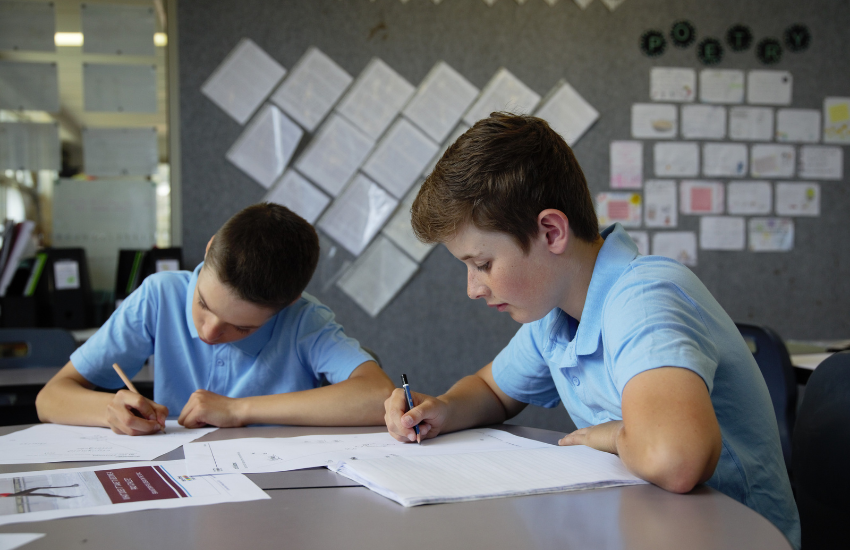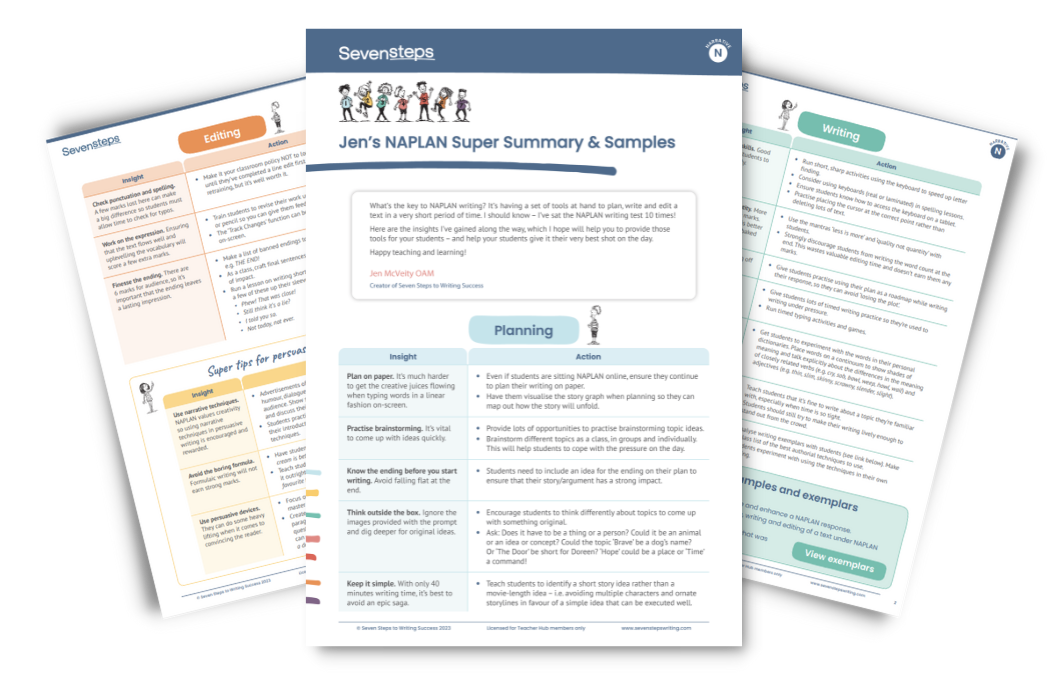Seven Steps creator Jen McVeity has sat the NAPLAN writing test 10 times and lived to tell the tale!
As an author, it’s obviously not the actual writing that’s a challenge. In fact, Jen feels that the NAP Marking Criteria truly values great writing.
But it’s the limitations NAPLAN puts on the test taker that are the problem.
1. Students need time to plan – actually all writers do
Every year, Jen finds the 5-minute planning time impossible. As she says, ‘I can’t even drink a coffee in five minutes, let alone plan a powerful piece of writing.’

Students need time to brainstorm, come up with an idea that is original – not the first idea that springs to mind.
Importantly, they need to plan how they will structure their writing. How will their start sizzle, how will they build tension and end with impact?
Fifteen minutes should be the minimum planning time for any piece of sustained writing.
What can you do to help students make the most of their 5 minutes?
NAPLAN is only one test. Great writing needs lots of planning, so keep up your great work on Step 1: Plan for Success.
Before NAPLAN next year, practise some fast brainstorming drills and teach kids how to visualise their ideas on the Writing Graph so they can quickly plan their text.
In this series of short videos, Jen shares her insights into the NAPLAN writing task.
Not a Seven Steps member? View subscription options, including our free Starter account, here.
2. Spelling, grammar, punctuation are given too much weight
The heavy weighting given to these secretarial parts of writing (nearly 23%) seems unfair. The Language Conventions NAPLAN test already measures this – why double test?

Jen, like most students, ran out of time at the end so couldn’t review and edit her writing. That’s where her points took a hit.
What can you do to help students with this?
We think the perfect time to worry about spelling, grammar and punctuation is when you are doing a final draft. That’s when you should take some time to review your writing to Ban the Boring and clean up your mistakes.
It can be hard to allow time for this though in a test situation. Get students in the habit of doing at least one re-read of their writing – making sure to fix obvious spelling mistakes, add missing punctuation and cutting out unnecessary sentences and words.
Jen’s NAPLAN Super Summary & Samples
Check out this resource for:








